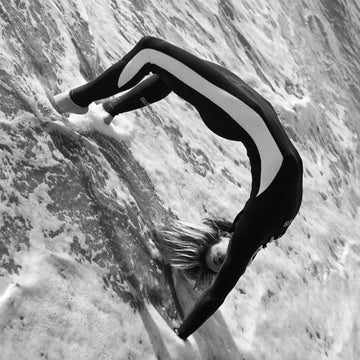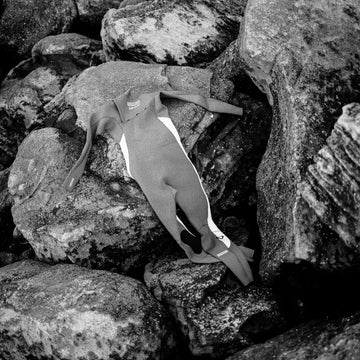WHAT RUBBER FOAM MAKES A GOOD WETSUIT?

There are a number of viable fabrics used to make wetsuits
Most popular is a petroleum-based neoprene, a synthetic rubber first marketed in 1931 that is made from petrochemicals. WALLIEN has never used petrol-based neoprene.
Then there is Yamamoto limestone neoprene, sometimes called geoprene, which using special technology, converts calcium carbonate from limestone into chloroprene rubber chips.
Yamamoto uses incredibly pure rock, mined from Mount Kurohime in Japan. Based on current estimates the world’s petrochemical resources will last only another 50 years. There are enough limestone reserves to last 3.000 years.
There is also Bioprene, a a variant of limestone neoprene made from organic matter like crushed oyster shell.
Lastly there are natural rubber alternatives like Yulex. Yulex is made from rubber harvested from the Hevea tree on PEFC and FSC certified smallholder plantations, minimising environmental impact and ensuring fair pay and benefits for workers.

Japanese Limestone Neoprene is the most premium rubber foam on the market
We use Yamamoto neoprene to deliver the best combination of performance and durability, but it is not without its environment impact. However, the neoprene factory has recently gone 100% renewable.
We believe that it's durability, higher levels of warmth, flex and water resistance (94% compared to 60-70% with traditional neoprene, which also means it dries much quicker - no cold wetsuit to shiver into when you are using it frequently) make it the best product on the market today.
This translates into a suit that is as light wet as it is dry, with a far superior warmth and no flushing.

Incredibly comfortable
Limestone-based neoprene involves no compromise on quality. It is more stretchy, more waterproof, warmer, softer textured (that great word, ‘buttery’), and once it’s on it is very comfortable.
It has excellent ‘memory’, meaning it snaps back to form, which can make the first few times you put it on a bit harder than normal, but equally, provide a notably flattering fit that has a ‘custom’ feel.
In terms of mobility, anyone familiar with wetsuit use will know the infuriating discomfort of an ill-fitting wetsuit when trying to paddle out through the waves to get to the line up. Japanese limestone neoprene has incredible stretch.
Japanese neoprene has such a form integrity that we have mothers who share wetsuits with their teenage sons and find fit is great for both.
More importantly than that, when you duck under an icy wave or take a roll or a wipeout there is a massive reduction in the number of cruel cold ‘flush’ down the back of your neck.
However, we see that natural rubber materials are quickly catching up to these qualities, so we are investigating new product lines with this material.

Unparalleled durability
Yamamoto neoprene is tear resistant and durable. It is a wetsuit built to last, and last.
Depending on how well you care for your WALLIEN wetsuit made from Yamamoto limestone neoprene it will last from three to ten times longer than petrochemical alternatives.
Even if your wetsuit care regime is pretty haphazard, of the chuck it on the floor and deal with it tomorrow variety (don’t worry, we all do it), Yamamoto limestone is far more resistant to tears.

Superb styling options
From a style perspective, with Yamamoto fabric we have a far greater scope for playing with design and the fit is flattering to every water woman’s form, you will not believe how well it functions across many watersports, how much like a second skin it feels…and looks.
So what’s the downside?
It’s expensive, and it’s not the most ecologial product to make but it is durable, higher performing, a luxury item that is so like a second skin you could almost be naked - but warmer.
Limestone Neoprene Wetsuits

Horizonia Springsuit Wetsuit ― Blue Marine Foundation - 2024

Nikki van Dijk Springsuit Wetsuit ― Sun

Nikki van Dijk Springsuit Wetsuit ― Moon

Nikki van Dijk Springsuit Wetsuit ― Aquamarine Gradient

Springsuit Wetsuit ― Retro Monochrome

Nikki van Dijk Springsuit Wetsuit Boyleg ― Aquamarine Gradient

Nikki van Dijk Springsuit Wetsuit Boyleg ― Moon








